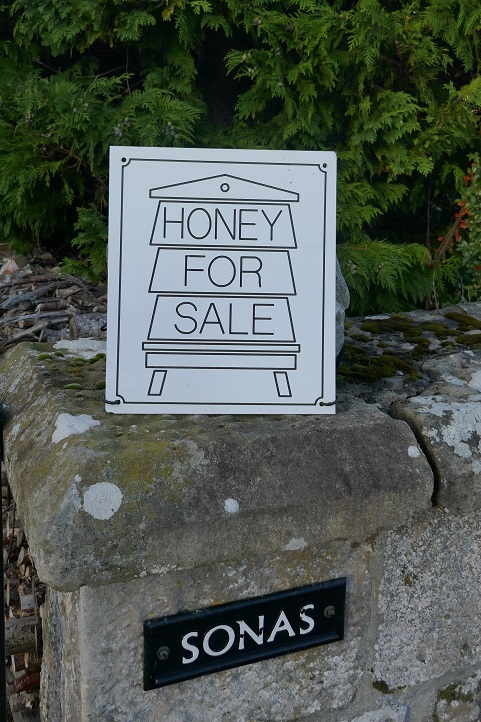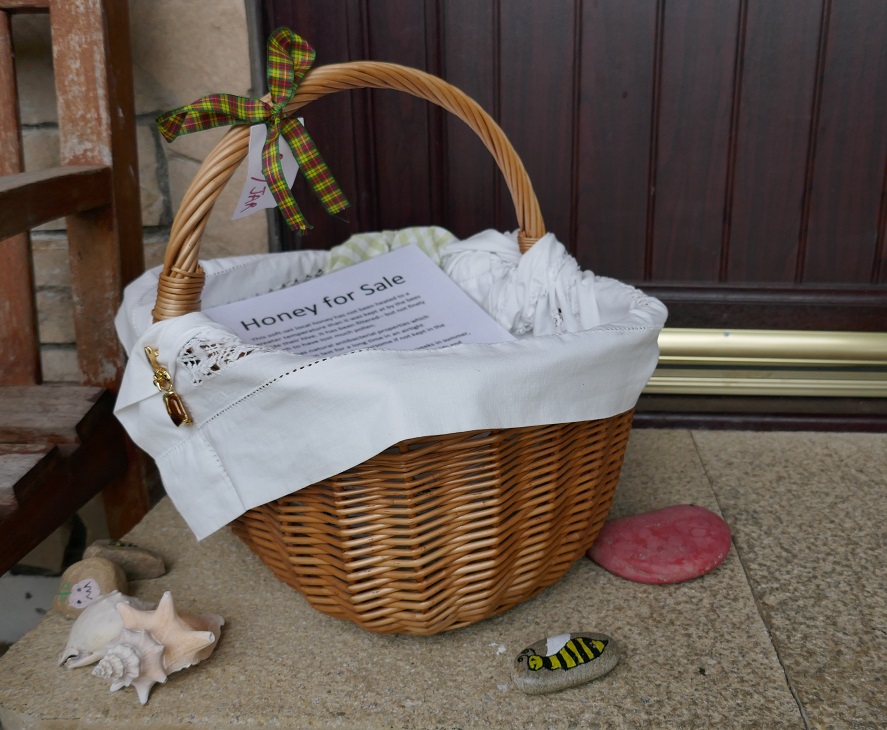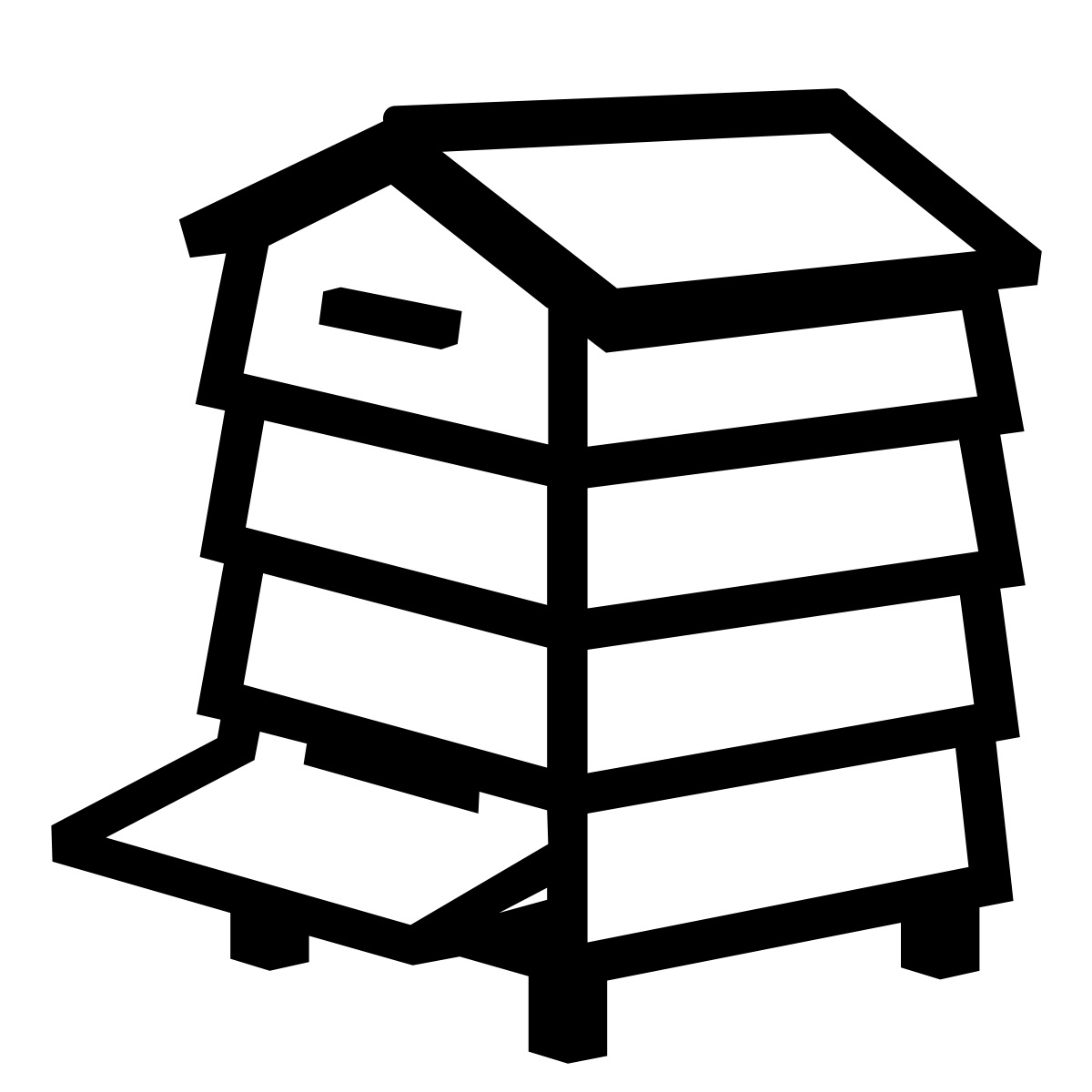
Who doesn’t like honey? A few people perhaps, but often when they try local honey they change their minds. The flavour is unique and locally produced food is gaining more interest.
Selling
Honey production is not my main reason for keeping bees. However, when there is an abundance, like last year’s bumper harvest, I sell it at my front door. A “honey for sale” sign at the garden gate attracts some attention but, with limited through-traffic along the road, word of mouth sells it best. Some people travel 15 miles out from Inverness to buy my soft set oil seed rape honey because they like the mild tasty flavour.
Promoting Honey
I’m keen to promote honey as a local premium product worth paying for so I created a laminated information sheet to raise awareness with customers of how the bees and I process it. I’ve discovered that many jars are bought for presents so recently I designed an additional label for every jar giving key information.
Laminated Information Sheet
Summer Honey for Sale: £8/lb
This naturally soft-set honey has not been heated by the beekeeper above beehive temperature. It has been filtered, but not finely enough to have lost many pollen grains, if any.
Honey has natural antibacterial properties which means that it lasts for a long time in an airtight container. It is more flavoursome if not kept in the fridge, and indeed it does not require refrigeration.
The average worker bee lives for six weeks in summer, and three of these are spent foraging in the fields and gardens collecting pollen and nectar. One bee produces about 1/12 teaspoon (0.5g) honey in her lifetime.
Honey is a premium food and its production depends upon keeping bees healthy, having favourable weather and plenty available local forage untainted by pesticides. The bees that produced this honey spend winters stocked up with their own honey supplies and only the surplus is ever sold.
Price: 50p/ounce.
£6 per 12oz jar, and £8 per 16 oz/1lb jar.



Filling Jars
I used to fill the jars up to the top because I think it looks nicer. However, it increases the weight considerably and I don’t want to get on the wrong side of Trading Standards and The Weights And Measures (Packaged Goods) Regulations 2006. If you add it all up, overfilling jars also means that you give away a lot of free honey over a season. So, I have decided to source jars that hold no more than 340g which will look nicer than what you see above.
At the moment, I use a standard honey label but I’m getting a specially designed one soon. Unique labeling helps your product stand out and be remembered.


This is a wonderful blog and I just love reading it. I have learned so much about bees and their ways. They are amazing little creatures and they make the most beautiful honey which I love eating so much.
I never before realised how interesting the whole concept of bee-keeping really is. I merely regaled friends about my experiences of getting stung in the head when a bee got stuck in my hair. It happened just before I was scheduled to have a titanium hip joint to replace my osteo-arthritic femur head. The operation was postponed till ten days after the swelling had subsided. I was very unhappy.
Recent bee experiences have really been fascinating. Thank you Ann for the opportunity to learn about bees and the trust you put in me for the chance to actually get so close to them.
Wonderful to have a very special bee-master of a sister! How lucky I am. Thank you Ann.
Thank you for sharing how being close to bees recently has changed your perceptions and increased your appreciation of these amazing wee animals, Catriona.
I like the comment about the air miles! 🙂
Have you received any feedback from customers that your practice of not filling the jars gives them a sense that they are not getting the full amount of honey for which they are paying? Here in the U.S., the honey jars have a mark near the top that shows when they are properly filled (to the 1 lb mark, or whatever), so folks over here expect a full jar. Not so in the U.K.? I do understand that you don’t want to put more honey in your jars than what is indicated on their labels.
Not so far, Tom. Interesting to learn about your jars in the US having a guiding mark. I think that researching jars is on the cards for me and I will need to find some that take only 12oz and look full.
What a clever idea to add the extra information. 😊